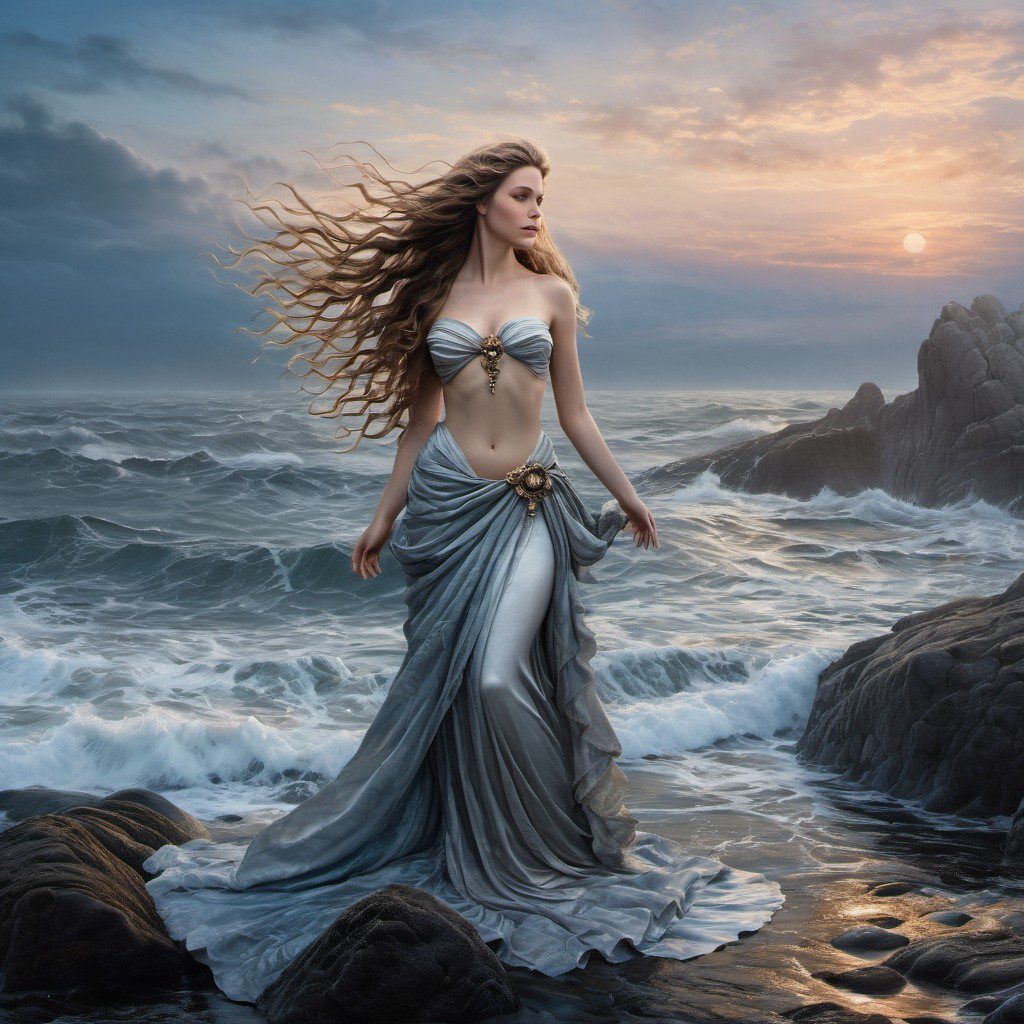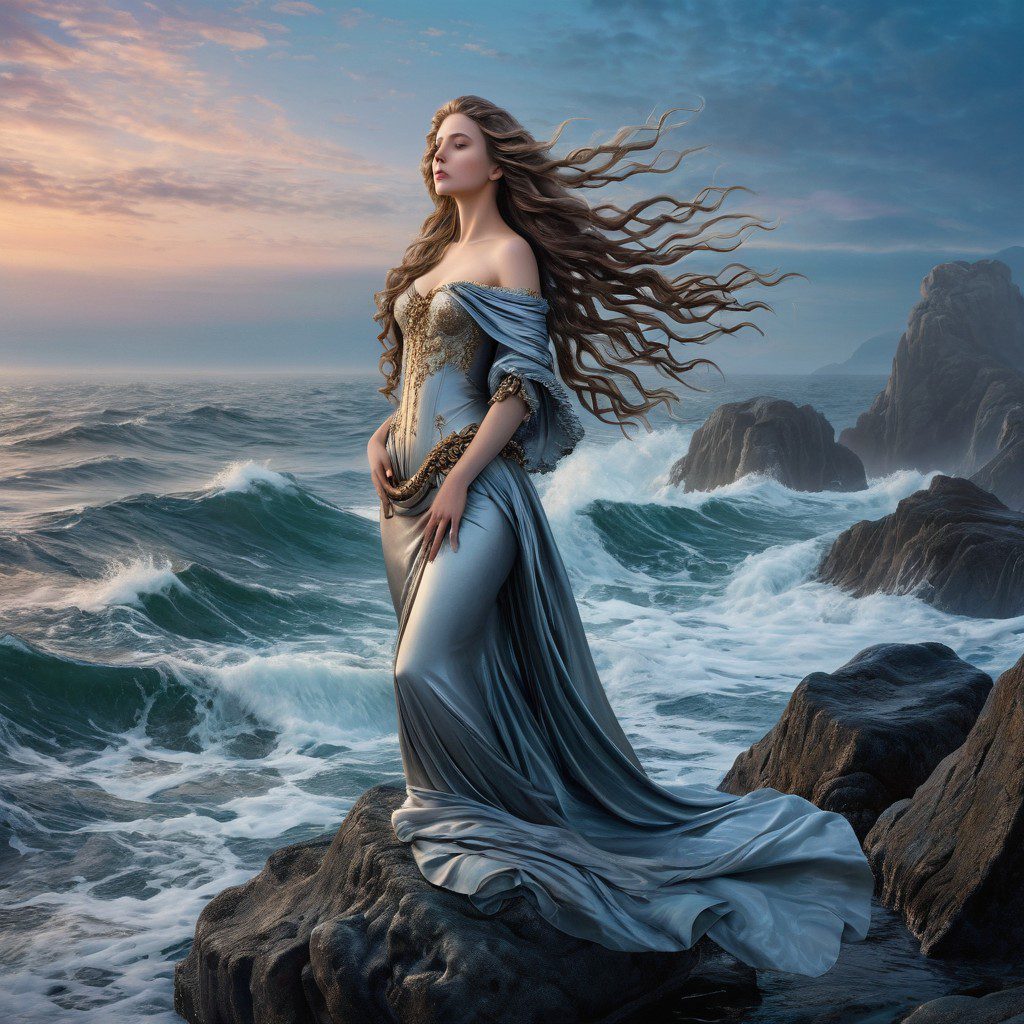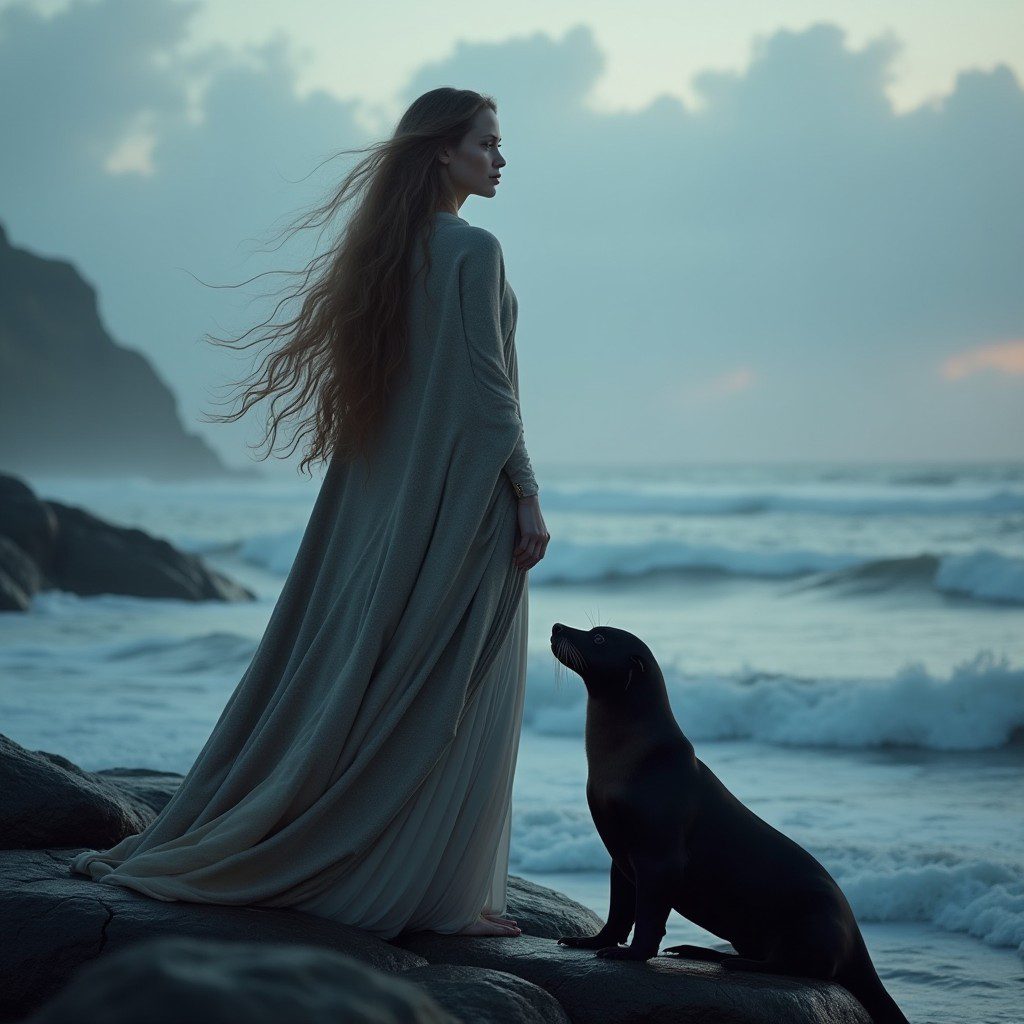The Selkie: The Shape-shifting Seal of Scottish and Irish Folklore

In the windswept isles of Scotland and Ireland, amidst crashing waves and rocky shores, tales have been whispered for centuries about the Selkie—a mysterious, shape-shifting creature that moves between the realms of sea and land. These enchanting beings are seals in the water, but once they shed their skin, they transform into beautiful humans. The story of the Selkie is one of love, longing, and loss, embodying the delicate balance between two worlds.
The Dual Nature of the Selkie
At the heart of the Selkie myth is their ability to live a dual existence. Selkies are creatures of the sea, dwelling as seals in the ocean’s depths. However, on certain nights—usually under the full moon—they come ashore, shedding their seal skins to reveal their human form. These transformations often take place on remote beaches, far from human eyes. In human guise, Selkies are stunningly beautiful, and their appearance has led to many tragic and bittersweet tales of romance.
Male and female Selkies are both said to be irresistibly attractive. Male Selkies are often depicted as seducers, luring human women who are unhappy in their marriages into brief, passionate love affairs. In contrast, female Selkies are frequently portrayed as tragic figures—women trapped between two worlds, often forced into relationships with humans when their seal skins are stolen and hidden away.
Tales of Love and Loss
One of the most well-known elements of Selkie lore is the story of human men who fall in love with female Selkies. These men, enchanted by the beauty of a Selkie in her human form, steal her seal skin while she is ashore. Without her skin, the Selkie cannot return to the sea, and she is effectively trapped in the human world. In most of these stories, the man marries the Selkie, and they have children together. Yet, despite her new life on land, the Selkie’s longing for the ocean never fades.
Eventually, the Selkie discovers where her husband has hidden her seal skin. Once she retrieves it, she is compelled to return to the sea, leaving her family behind. In some versions of the tale, she visits her children occasionally in the form of a seal, but she can never fully return to her human life.
These stories often end in heartbreak, with the human spouse left bereft, a reminder that no matter how deeply love may run, some forces—like the call of the ocean—are too powerful to resist.
The Symbolism of the Selkie

The Selkie is a powerful symbol of the tension between freedom and captivity, nature and civilization. For the Selkie, life on land is an unnatural state—something forced upon them by human intervention. Their true home is the sea, and they long to return to it, even if it means leaving behind loved ones.
In many ways, the Selkie represents the desire to be true to one’s nature. When Selkies are separated from the ocean, they experience profound sorrow and homesickness. This echoes the human longing for freedom and the idea that trying to confine or change someone’s essential nature can lead to pain and loss.
Selkies are also seen as symbols of transformation. Their ability to move between two worlds—human and sea creature—represents the fluidity of identity. They belong fully to neither world, existing in a liminal space that embodies the complexities of love, freedom, and the choices we make.
Selkies in Popular Culture
While Selkies are not as well-known globally as other mythological creatures like mermaids, they have found a place in literature, film, and television. Perhaps the most famous modern depiction of a Selkie is in the 1994 movie The Secret of Roan Inish, which weaves together folklore and family history in a story about a young girl who discovers her family’s Selkie heritage.
The Selkie myth also appears in the animated film Song of the Sea (2014), which tells the story of a young boy who discovers that his mute sister is a Selkie. The film beautifully captures the magical and melancholic aspects of Selkie lore, emphasizing themes of loss, longing, and the call of the ocean.
In literature, Selkies have appeared in numerous poems and short stories, often as metaphors for fleeting love or unattainable beauty. Their connection to both the sea and the human world makes them ideal characters for exploring themes of transformation, identity, and belonging.

Strengths and Weaknesses of the Selkie
Strengths:
- Shape-shifting: The Selkie’s greatest strength lies in its ability to move between seal and human forms, allowing them to live in two different worlds. This shape-shifting ability also enables them to avoid capture—provided they retain control of their seal skin.
- Beauty and Allure: Selkies, in their human forms, are said to be breathtakingly beautiful, with an almost supernatural ability to attract and enchant humans.
- Connection to the Sea: As creatures of the ocean, Selkies are natural swimmers and have an innate connection to the water, granting them freedom and mobility in their seal form.
Weaknesses:
- Reliance on the Seal Skin: A Selkie’s vulnerability comes from their dependence on their seal skin. If a human manages to steal their skin, the Selkie is trapped in human form and unable to return to the sea.
- Homesickness: Even when living a seemingly content life on land, Selkies experience an intense longing for the ocean. This longing can never truly be overcome, and it often leads to heartbreak when they eventually return to the sea.
Protection from the Selkie
Unlike many creatures in folklore, Selkies are not inherently malevolent. They are more tragic figures than predators, and humans rarely need to protect themselves from them. However, those who wish to form relationships with Selkies must be careful—if you attempt to control or confine them by stealing their seal skin, the relationship is destined to end in sorrow. The best way to maintain harmony with a Selkie is to respect their nature and allow them the freedom to return to the sea when they desire.
The Eternal Allure of the Selkie
The Selkie myth continues to captivate the imaginations of those who hear it. With their beautiful but tragic dual existence, Selkies embody the pain of living between two worlds and the tension between desire and freedom. In their stories, we are reminded of the power of nature, the fragility of love, and the importance of staying true to oneself.
Whether appearing as seals diving gracefully through the ocean waves or as enchanting humans walking on remote beaches, Selkies remain one of the most haunting and enduring figures of Celtic folklore.
